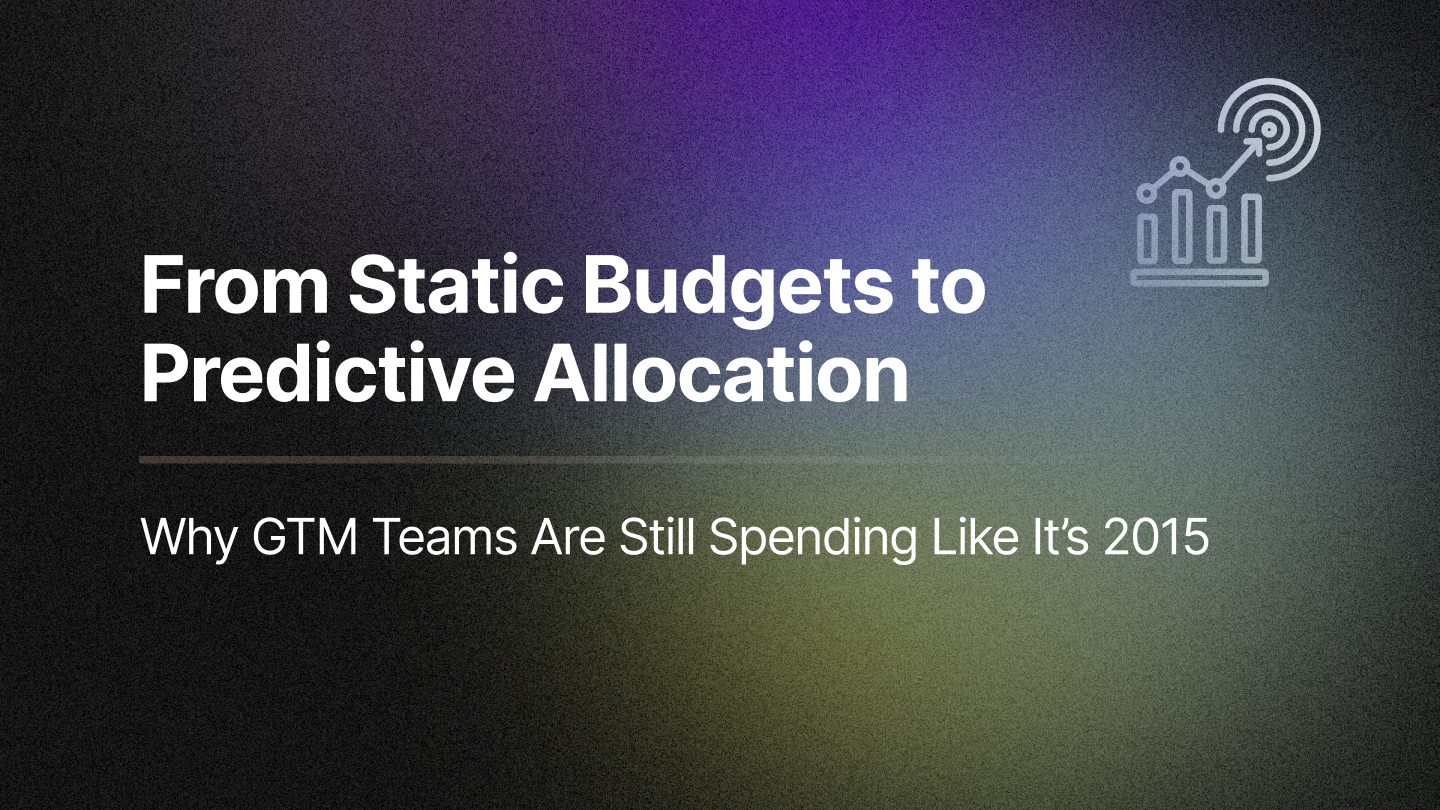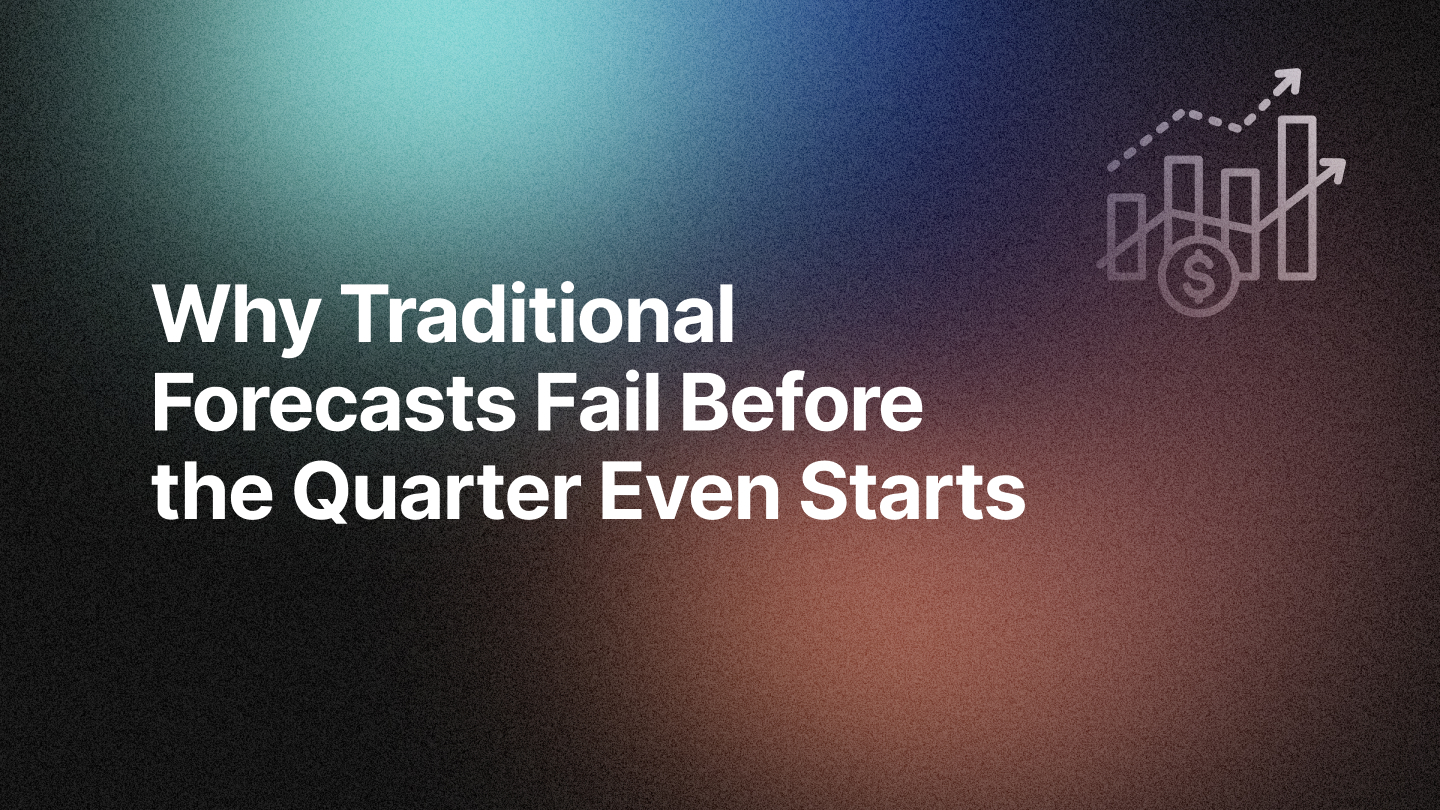One question that keeps B2B marketers and revenue leaders awake at night is: "What are the things driving revenue today, and what could drive revenue in the future?" The answer to this lies in the concept of attribution, a critical tool that has been used for decades to measure the effectiveness of go-to-market (GTM) activities. However, the role of attribution is changing, and understanding this evolution is key to staying relevant and ahead.
Attribution As a Feedback Loop for the B2B GTM Teams
Attribution is often misunderstood. According to Gartner, only 54% of marketing decisions are data-driven, indicating that many businesses still rely on outdated methods rather than fully leveraging attribution technologies. Many believe that simply implementing an attribution technology will serve as a silver bullet, solving all their revenue woes. But it's not that simple. Attribution is a way to measure the effectiveness of your marketing and sales efforts, it can offer actionability but it is not a strategy in itself.
Think of attribution as a feedback loop. It provides data on what has worked in the past and offers insights that help shape future strategies. However, to leverage attribution effectively, it must be integrated into a well-thought-out GTM strategy that aligns marketing, sales, and other revenue-driving teams.
The Shifting Landscape of B2B Revenue Drivers
Traditionally, the GTM motion was relatively straightforward. Outbound sales dominated the B2B world, with inside sales teams prospecting and marketing playing a supportive role in branding and strategy. But today, the landscape is far more complex. The consumerization of B2B, the rise of demand generation, and the emergence of new channels like SDR and partner motions have added layers of complexity to the GTM process.
Buyers now have more control than ever. According to a study by Forrester, 68% of B2B buyers prefer to research independently online before engaging with a salesperson. They interact with multiple channels—community networks, review sites, and social media—long before they engage with a company directly. This shift has made traditional attribution methods less effective in aligning marketing strategies with business goals. The old ways of thinking about attribution—marketing-sourced vs. sales-sourced leads—are no longer sufficient.
The New Way: Integrated Revenue Campaigns and Predictive Attribution
The future of attribution lies in moving beyond simple measurement to providing actionable insights. This means looking forward rather than just analyzing the past. The goal is to connect attribution with day-to-day funnel management, ensuring that every touchpoint across the buyer journey is accounted for and optimized.
To achieve this, companies need to focus on five foundational elements of attribution:
1. Scope: Consider the full context of your GTM motion, not just marketing campaigns.
2. Focus: Shift from credit-based questions to strategic ones that ask, "What should we do next?"
3. Results: Aim for actionable recommendations, not just ROI measurements.
4. Timeliness: Adopt a forward-looking perspective, predicting future performance rather than just reflecting on the past.
5. Actionability: Ensure that attribution drives immediate, effective changes in your GTM strategy.
By integrating these elements, companies can make data-driven decisions in real time, adjusting their strategies on the fly to maximize revenue.
Budget Allocation and Strategic Planning
One of the most critical applications of modern attribution is in budget allocation. With marketing budgets being squeezed, it's more important than ever to allocate resources effectively. According to eMarketer, global ad spending is expected to reach $763.2 billion in 2024, but with tighter budgets, every dollar needs to be optimized. Traditional methods of waiting until the end of a campaign to assess its effectiveness are no longer viable. Instead, companies need to predict the performance of campaigns in real time and make adjustments as needed.
This predictive approach allows for more efficient resource allocation, ensuring that dollars are spent on the most effective channels and campaigns. It also enables companies to fine-tune their Ideal Customer Profile (ICP) and target the right segments with the right messages.
RevSure Full Funnel Attribution AI: The Future of B2B Attribution
RevSure’s Full Funnel Attribution solution is designed to address the complexities of modern GTM motions. It integrates data from all touchpoints across the buyer journey—marketing, sales, SDR, and partner interactions—into a single, cohesive view. This holistic approach ensures that no touchpoint is overlooked, allowing for a more accurate and actionable attribution model.
- Predictive Attribution: Unlike traditional attribution models that focus on past performance, RevSure’s solution predicts future outcomes based on historical data, allowing businesses to make proactive decisions that drive revenue.
- Omnichannel Integration: RevSure’s solution integrates with all major CRM, marketing automation, and sales tools, ensuring that every touchpoint across the GTM motion is captured and analyzed.
- Real-Time Insights: With real-time data analysis, RevSure provides actionable insights that enable businesses to adjust their strategies on the fly, optimizing spend and improving ROI.
- Maps End-to-End Buyer Journeys: It captures all activities across the buyer journey, including touches, campaigns, visits, impressions, and clicks. By not limiting the analysis to just "clicks," the solution ensures that every significant interaction is accounted for.
- AI-driven Recommendations: RevSure uses data-driven marginal optimization and allocation methods to offer precise reallocation recommendations, guiding businesses on which campaigns to double down on and where to invest marketing spending for maximum impact. This ensures that spending is directed toward the campaigns and channels predicted to deliver the best performance.
RevSure’s customers have seen significant improvements in their marketing and sales outcomes. For example, customers have reported up to a 25% increase in new bookings and a 15% improvement in lead-to-Opp Conversion by using RevSure’s predictive attribution capabilities. Hear Karin Stevens, CMO at Overhaul talk about RevSure and the impact it has made on their GTM efforts.
Conclusion: A New Era of Attribution
As the science of marketing continues to evolve, so too must our approach to attribution. It's not just about tracking what happened—it's about predicting what will happen and using that knowledge to drive smarter, more strategic decisions. With solutions like RevSure’s Full Funnel Attribution, companies can ensure they are not just reacting to the market but actively shaping their future success.
The true power of attribution lies in its ability to bring together the art and science of marketing, helping businesses navigate the complexities of today's GTM landscape and drive revenue in a way that is both effective and sustainable. As more companies adopt these advanced attribution models, the future of revenue generation looks not only more predictable but also more profitable.
Listen to this episode of the RevTalks Podcast by RevSure, where Mark Kilens, CEO & Co-founder of TACK, and Deepinder Singh Dhingra, CEO & Founder of RevSure talk about the business impact of Marketing Attribution.
Related Blogs







